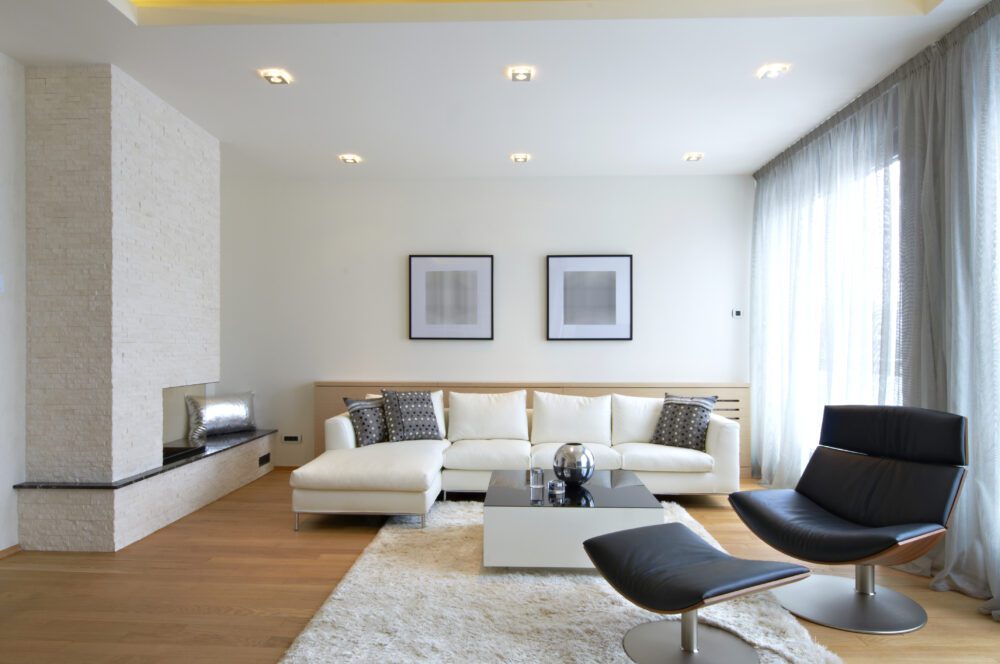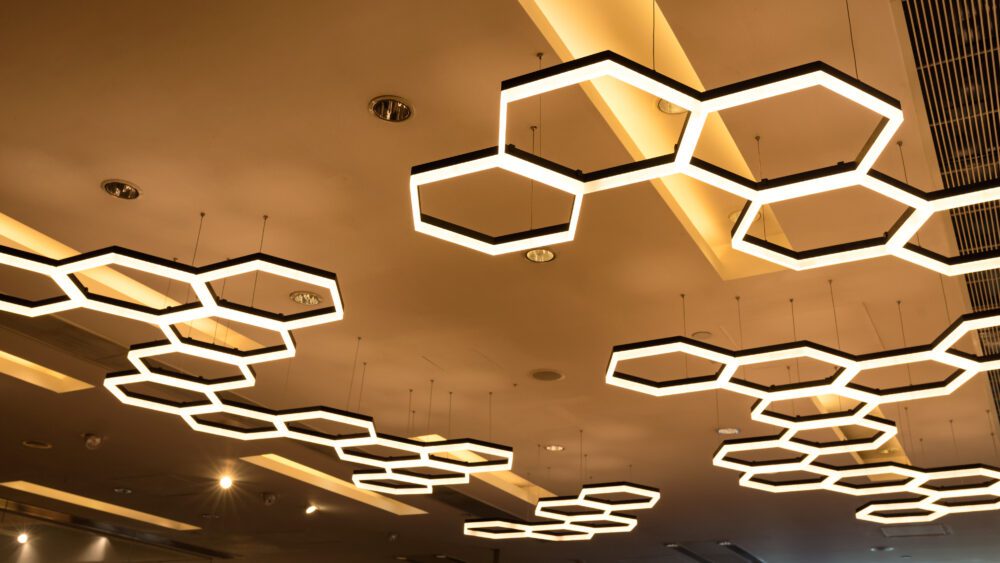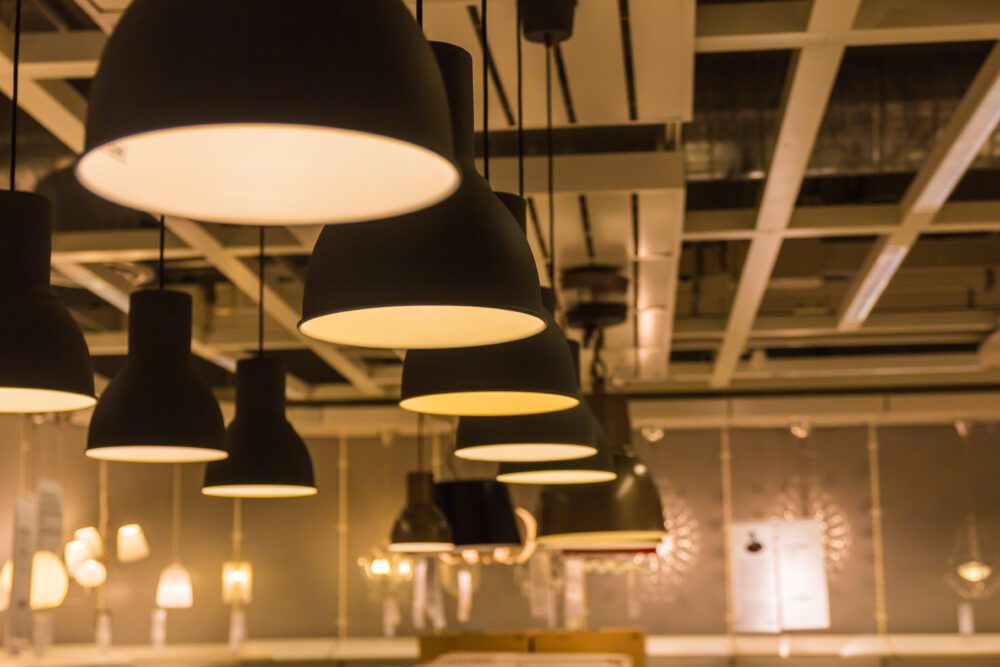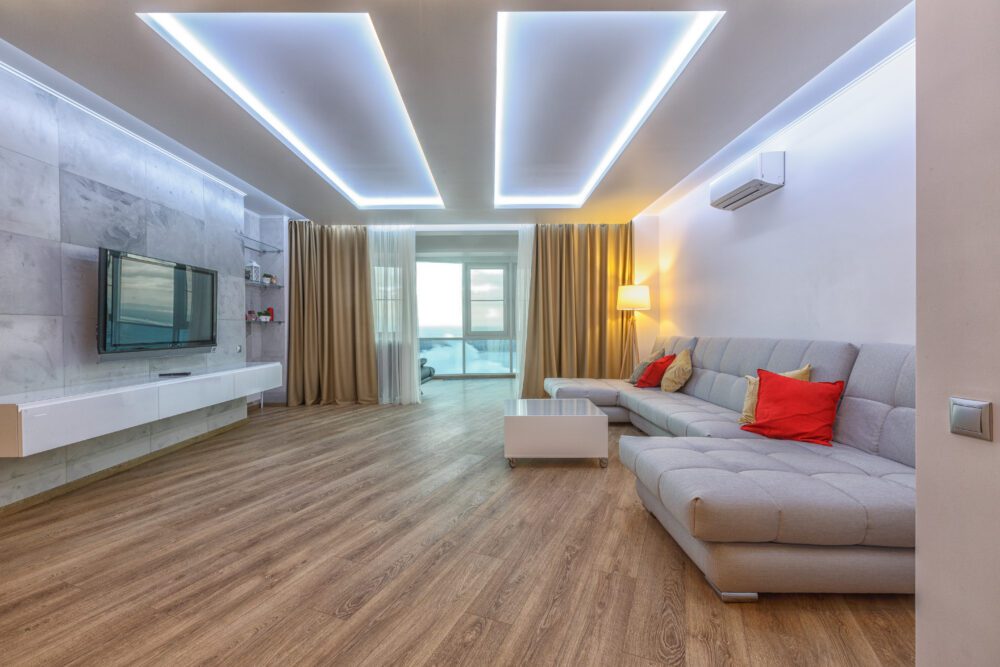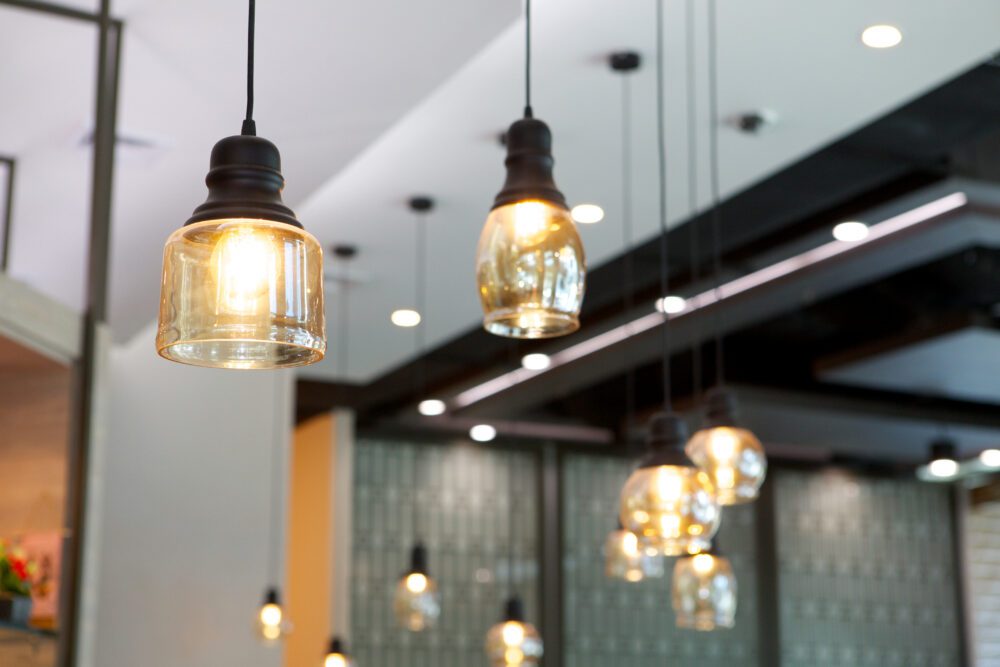June 2023,
XVII Ed. ,
256 pages
Price (single user license):
EUR 1800 / USD 1926
For multiple/corporate license prices please contact us
Language: English
Report code: S.15
Publisher: CSIL
Status: available for online purchase and immediate download
Download
Table of contents
The 17th edition of The Lighting Fixtures market in the United States offers a comprehensive picture of the lighting fixtures industry in the US, providing data and trends 2017-2022 and forecast up to 2025. From one hand, the report analyses the main trends affecting the market over the last five years, considering the production, the consumption, the imports, and the exports of lighting fixtures in the country. On the other hand, it offers an analysis of the market structure and the competitive system, an overview of the distribution system and the main players operating in the market:
International Trade
Lighting fixtures exports and imports are considered, broken down by country and by geographical area of destination/origin. The time frame considered is 2017-2022.
Market Structure
The lighting fixtures market is divided into four main segments:
- residential-consumer
- architectural-commercial
- industrial
- outdoor.
Also considered:
- Lamps (separately LED and Conventional)
- Connected lighting. As just one piece of the extensive Internet of Things (IoT) field, connected lighting is described as the connection of lighting, controls, and sensors to a local network that can be monitored and controlled, either wired or wirelessly, through a dashboard accessed by a computer, tablet, or smartphone. The lighting system may or may not be connected with other building systems, such as HVAC and security systems. Main segmentations: Residential/commercial indoor/outdoor items Wired/wireless
Within them, the market is further broken down by types of products, by technology, and by products applications.
Distribution Channels
The analysis of the distribution system is organized by the following channels:
- Contract
- Builders
- Lighting Specialists
- Lifestyle stores
- Distributors and Reps
- Home Improvement
- DIY stores
- E-commerce
A selection of architectural offices and lighting designers is also included, as an annex at the end of the report, together with 500 selected lighting retailers and 400 selected Home Improvement stores by region and selected town.
Competitive System
Finally, the report offers an analysis of the leading local and foreign players present in the market and in each segment considered; through sales data, market shares and short profiles.
An address list of around 150 US lighting fixtures manufacturers is included.
Among the considered products: indoor/outdoor lighting, decorative/residential lighting, commercial lighting, industrial lighting, traditional/transitional/contemporary lighting, floor/table/wall/ceiling lamps, suspensions, downlights, recessed lighting, linear lighting, LED panels, tracks/systems, projectors/spotlights, hospitality, retail, office lighting, entertainment lighting, lighting for museums, lighting for industrial plants, explosion-proof lighting, marine lighting, healthcare lighting, horticultural lighting, emergency lighting, residential outdoor lighting, lighting for urban landscape, Christmas lighting, street lighting, lighting for sporting facilities, tunnel lighting, conventional lamps, LED, connected lighting.
Selected companies
Acclaim, Acuity Brands, Aluz, Amerlux, Apogee, Artemide, Atlantic, Beghelli, Construlita, Cree Lighting, Current, Dialight, Ecosense, Edison Price, Elco Lighting, Elite, Evenlite, Evluma, Fagerhult, Flos, Fohse, FSL, Haoyang, Hinkley, Home Depot, Hubbardton Forge, Hudson Valley, i2Systems, Ikea, Iluminarc, Keystone, Kichler, Landscape Forms, Ledvance, Leedarson, Legrand, Leviton, Littmann Brands, Louis Poulsen, Lowe’s, LSI Industries, Lucifer, Musco Sports, Nora Lighting, NVC, Orion Energy Systems, Progress Lighting, Pure Edge, Quoizel, RAB Lighting, Satco, Signify (Philips Lighting), SLP, SNC Opto, Sonneman, Spectrum Lighting, TCP, Tivoli, TLS, Topaz, Torshare, Tospo, Usai Lighting, Visual Comfort, Wac Lighting, Yankon, Zumtobel
USA. Breakdown of lighting fixtures sales by distribution channel, 2017-2019-2022. Million USD
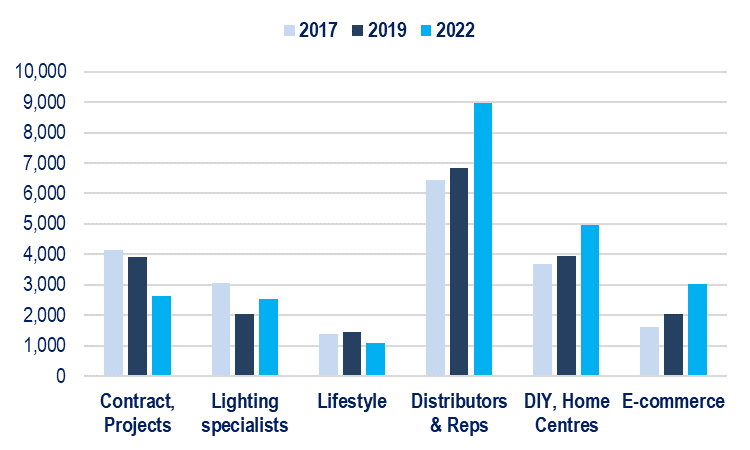
The US lighting market during 2022 registers a 6.5% growth in nominal terms as for lighting fixtures (consumer, professional, outdoor), up to 23.2 billion USD. The lamps market registers a decrease, of about -2.9%. The total US lighting market is estimated to be worth around USD 26 billion in 2022. This value includes lighting fixtures and lamps
Somewhat as 9 billion USD of lighting fixtures sold in the United States are imported. China holds the Lyon’s share on this import, even if with reduced volumes (4 billion USD today, 5 billion some years ago). It is also true that some of the Chinese players now reach USA from manufacturing plants based in Cambodia, Vietnam, Thailand, Philippines (imports jumping altogether from 100 million USD to 1.2 billion USD in five years). And the most structured Chinese players today also consider Mexico as a possible location for new plants. Less impressive, but nevertheless real, the sales growth from Europe: from 500 to 600 million USD. Mainly from Italy and Germany, but also France, UK, Poland, Spain, Czech Republic. And around 20 European players have also manufacturing plants in the United States.
Over the last five years, the consumption of lighting fixtures has changed: the residential segment has grown well above the market average (+5.9% on average per year), driven by pandemic and also availability of connected lamps. On the contrary, the commercial and outdoor segments have performed below the market average. Growth for industrial lighting is driven by specific market segments (Healthcare, Horticultural, Warehousing). In 2022, the weight of Office and Entertainment on the overall commercial lighting market has declined, while Hospitality and Public premises grew. Increasing activities include professional linear and consumer embedded lighting, Hospitality and Public Projects, residential outdoor. Better Retail than Contract business also this year. In 2022, the value of completed construction grew by more than 10 percent to nearly USD 1.8 billion.
The Report is structured as follows:
- Chapter I Basic data presents an overview of the US lighting fixtures sector based on CSIL’s processing of statistics and company data from official sources, both national and international, as well as sector information and field information collected through direct interviews with companies and sector experts. Through tables and graphs, data on lighting fixtures production, consumption and international trade are analysed, highlighting the two main market segments for lighting fixtures in the United States: residential/consumer lighting and professional lighting (commercial, industrial, outdoor).
- Chapter II Activity trend and forecasts offers lighting fixtures statistics and the main macroeconomic indicators necessary to analyse the performance of the sector for the last 6 years (2017-2022), together with forecasts for the next three years (2023-2025); Lighting fixtures and lamps producer price trends; Highlights of some among the main events occurring in the US lighting market since 1989 to 2022, and a selection of merger & acquisitions deals of leading lighting companies, 2021-2023.
- Chapter III International trade provides detailed tables on lighting fixtures exports and imports (the time frame considered is 2017-2022), broken down by country and by geographical area of destination/origin; Breakdown of lighting fixtures exports by geographic area for a sample of US Lighting Companies.
- Chapter IV Market structure offers an analysis of the lighting fixtures market by segment (Residential-consumer, architectural-commercial, industrial, outdoor lighting), by style (traditional, transitional, contemporary), by types of products (floor, table, wall/ceiling lamps, chandeliers/suspensions, downlights, recessed lights, spot lights, projectors, batten/modular systems, linear lighting, strip lighting, hi-bay/low bay, LED panels), by application (residential/consumer market, hospitality, office, retail, museums, entertainment venues, schools and infrastructures, industrial sites, healthcare, emergency, horticultural, marine, residential outdoor, urban landscape, Christmas and special events, lighting for streets and major roads, tunnels and galleries, sport plants and other large areas), and an overview on new technologies.
- Chapter V Distribution channels gives an overview of the main distribution channels active on the North American lighting fixtures market (Residential-Consumer and Technical-Professional segments) through tables showing the breakdown of lighting fixtures sales by distribution channel for most of the main companies. It also provides an estimation of the lighting fixtures consumption breakdown by US Region and State. A selection of architectural offices and lighting designers is also included, as an annex at the end of the report, together with 500 selected lighting retailers and 400 selected Home Improvement stores by region and selected town. Distribution channels considered: Contract, Projects and Builders, Specialist Lighting Stores, Lifestyle Retailers (furniture & antique shops, furniture chains, department stores), Distributors & Reps, DIY Stores and Home Centres, E-commerce.
- Chapter VI Competitive System offers an insight into the leading local and foreign players present in each segment and in each destination market. Through detailed tables are shown sales data and market shares of the top lighting fixtures companies; short profiles of the main players are also available.
- Chapter VII Demand Drivers offers the main macroeconomic indicators, social trends and economic forecasts necessary to analyse the performance of the sector; in addition, a focus on the building activities in the country is also provided.
- Annex: directory of companies mentioned provides contact information for the main companies mentioned in this Report.
The 17th edition of The Lighting Fixtures market in the United States offers a comprehensive picture of the lighting fixtures industry in the US, providing data and trends 2017-2022 and forecast up to 2025. From one hand, the report analyses the main trends affecting the market over the last five years, considering the production, the consumption, the imports, and the exports of lighting fixtures in the country. On the other hand, it offers an analysis of the market structure and the competitive system, an overview of the distribution system and the main players operating in the market:
International Trade
Lighting fixtures exports and imports are considered, broken down by country and by geographical area of destination/origin. The time frame considered is 2017-2022.
Market Structure
The lighting fixtures market is divided into four main segments:
- residential-consumer
- architectural-commercial
- industrial
- outdoor.
Also considered:
- Lamps (separately LED and Conventional)
- Connected lighting. As just one piece of the extensive Internet of Things (IoT) field, connected lighting is described as the connection of lighting, controls, and sensors to a local network that can be monitored and controlled, either wired or wirelessly, through a dashboard accessed by a computer, tablet, or smartphone. The lighting system may or may not be connected with other building systems, such as HVAC and security systems. Main segmentations: Residential/commercial indoor/outdoor items Wired/wireless
Within them, the market is further broken down by types of products, by technology, and by products applications.
Distribution Channels
The analysis of the distribution system is organized by the following channels:
- Contract
- Builders
- Lighting Specialists
- Lifestyle stores
- Distributors and Reps
- Home Improvement
- DIY stores
- E-commerce
A selection of architectural offices and lighting designers is also included, as an annex at the end of the report, together with 500 selected lighting retailers and 400 selected Home Improvement stores by region and selected town.
Competitive System
Finally, the report offers an analysis of the leading local and foreign players present in the market and in each segment considered; through sales data, market shares and short profiles.
An address list of around 150 US lighting fixtures manufacturers is included.
Among the considered products: indoor/outdoor lighting, decorative/residential lighting, commercial lighting, industrial lighting, traditional/transitional/contemporary lighting, floor/table/wall/ceiling lamps, suspensions, downlights, recessed lighting, linear lighting, LED panels, tracks/systems, projectors/spotlights, hospitality, retail, office lighting, entertainment lighting, lighting for museums, lighting for industrial plants, explosion-proof lighting, marine lighting, healthcare lighting, horticultural lighting, emergency lighting, residential outdoor lighting, lighting for urban landscape, Christmas lighting, street lighting, lighting for sporting facilities, tunnel lighting, conventional lamps, LED, connected lighting.
USA. Breakdown of lighting fixtures sales by distribution channel, 2017-2019-2022. Million USD

The US lighting market during 2022 registers a 6.5% growth in nominal terms as for lighting fixtures (consumer, professional, outdoor), up to 23.2 billion USD. The lamps market registers a decrease, of about -2.9%. The total US lighting market is estimated to be worth around USD 26 billion in 2022. This value includes lighting fixtures and lamps
Somewhat as 9 billion USD of lighting fixtures sold in the United States are imported. China holds the Lyon’s share on this import, even if with reduced volumes (4 billion USD today, 5 billion some years ago). It is also true that some of the Chinese players now reach USA from manufacturing plants based in Cambodia, Vietnam, Thailand, Philippines (imports jumping altogether from 100 million USD to 1.2 billion USD in five years). And the most structured Chinese players today also consider Mexico as a possible location for new plants. Less impressive, but nevertheless real, the sales growth from Europe: from 500 to 600 million USD. Mainly from Italy and Germany, but also France, UK, Poland, Spain, Czech Republic. And around 20 European players have also manufacturing plants in the United States.
Over the last five years, the consumption of lighting fixtures has changed: the residential segment has grown well above the market average (+5.9% on average per year), driven by pandemic and also availability of connected lamps. On the contrary, the commercial and outdoor segments have performed below the market average. Growth for industrial lighting is driven by specific market segments (Healthcare, Horticultural, Warehousing). In 2022, the weight of Office and Entertainment on the overall commercial lighting market has declined, while Hospitality and Public premises grew. Increasing activities include professional linear and consumer embedded lighting, Hospitality and Public Projects, residential outdoor. Better Retail than Contract business also this year. In 2022, the value of completed construction grew by more than 10 percent to nearly USD 1.8 billion.
The Report is structured as follows:
- Chapter I Basic data presents an overview of the US lighting fixtures sector based on CSIL’s processing of statistics and company data from official sources, both national and international, as well as sector information and field information collected through direct interviews with companies and sector experts. Through tables and graphs, data on lighting fixtures production, consumption and international trade are analysed, highlighting the two main market segments for lighting fixtures in the United States: residential/consumer lighting and professional lighting (commercial, industrial, outdoor).
- Chapter II Activity trend and forecasts offers lighting fixtures statistics and the main macroeconomic indicators necessary to analyse the performance of the sector for the last 6 years (2017-2022), together with forecasts for the next three years (2023-2025); Lighting fixtures and lamps producer price trends; Highlights of some among the main events occurring in the US lighting market since 1989 to 2022, and a selection of merger & acquisitions deals of leading lighting companies, 2021-2023.
- Chapter III International trade provides detailed tables on lighting fixtures exports and imports (the time frame considered is 2017-2022), broken down by country and by geographical area of destination/origin; Breakdown of lighting fixtures exports by geographic area for a sample of US Lighting Companies.
- Chapter IV Market structure offers an analysis of the lighting fixtures market by segment (Residential-consumer, architectural-commercial, industrial, outdoor lighting), by style (traditional, transitional, contemporary), by types of products (floor, table, wall/ceiling lamps, chandeliers/suspensions, downlights, recessed lights, spot lights, projectors, batten/modular systems, linear lighting, strip lighting, hi-bay/low bay, LED panels), by application (residential/consumer market, hospitality, office, retail, museums, entertainment venues, schools and infrastructures, industrial sites, healthcare, emergency, horticultural, marine, residential outdoor, urban landscape, Christmas and special events, lighting for streets and major roads, tunnels and galleries, sport plants and other large areas), and an overview on new technologies.
- Chapter V Distribution channels gives an overview of the main distribution channels active on the North American lighting fixtures market (Residential-Consumer and Technical-Professional segments) through tables showing the breakdown of lighting fixtures sales by distribution channel for most of the main companies. It also provides an estimation of the lighting fixtures consumption breakdown by US Region and State. A selection of architectural offices and lighting designers is also included, as an annex at the end of the report, together with 500 selected lighting retailers and 400 selected Home Improvement stores by region and selected town. Distribution channels considered: Contract, Projects and Builders, Specialist Lighting Stores, Lifestyle Retailers (furniture & antique shops, furniture chains, department stores), Distributors & Reps, DIY Stores and Home Centres, E-commerce.
- Chapter VI Competitive System offers an insight into the leading local and foreign players present in each segment and in each destination market. Through detailed tables are shown sales data and market shares of the top lighting fixtures companies; short profiles of the main players are also available.
- Chapter VII Demand Drivers offers the main macroeconomic indicators, social trends and economic forecasts necessary to analyse the performance of the sector; in addition, a focus on the building activities in the country is also provided.
- Annex: directory of companies mentioned provides contact information for the main companies mentioned in this Report.
SEE ALSO
The worldwide market for connected lighting
February 2024, I Ed. , 88 pages
This report analyses the global lighting market focusing on LED and connected lighting trends. It provides market forecasts emphasizing the impact of green transition and digital transformation. The study also includes a section on industry competition, estimating sales, and market shares for leading manufacturers.
Lighting: World Market Outlook
November 2023, XXVI Ed. , 123 pages
The world market for lighting fixtures reached a value of USD 97 billion in 2023. After some fluctuating performance in the post-pandemic period, it is expected to remain stable in 2024, followed by moderate growth in 2025 and 2026. The major consuming countries are the US, China, Japan, India and Germany. The twenty-six edition of CSIL research “Lighting: World market outlook” analyzes, through tables and graphs, data on lighting fixtures production, consumption and international trade at worldwide level as a whole and for 70 considered countries, for the years 2013-2022 and 2023 preliminary. lighting fixtures market forecasts for the next three years (2024-2026) are also provided
The lighting fixtures market in China
September 2023, XVI Ed. , 205 pages
The 16th edition of The Lighting Fixtures market in China offers an accurate and in-deep analysis of the lighting fixtures industry in China, providing data and trends for the period 2017-2022 and forecasts up to 2025. From one hand, the report analyses the main trends affecting the market over the last five years, considering the production, consumption, imports and exports of lighting fixtures in the country. On the other hand, it offers an analysis of the supply structure and the competitive system, an overview on smart connected lighting trend, the distribution system and the main players operating in the market
The European market for lighting fixtures
May 2023, XXXII Ed. , 392 pages
In 2022, consumption of lighting fixtures in the EU30 countries registered a 8.3% increase, reaching a value of EUR 19.9 billion. Better results for commercial lighting (versus residential, industrial and outdoor), big players (with a 12% Ebitda), design oriented, area lighting, hospitality, contract (versus retail), linear lighting, emergency. More IP patents and acquisitions. Top 10 players hold a 30% market share.
The lighting fixtures market in Middle East and North Africa
February 2023, VIII Ed. , 231 pages
The report offers an accurate analysis of the lighting fixtures market in 12 MENA countries: Bahrain, Jordan, Kuwait, Lebanon, Oman, Qatar, Saudi Arabia, United Arab Emirates, Egypt, Algeria, Morocco, Tunisia, hereafter referred to as MENA region. The first section of the Report shows the aggregate figures and the outlook of the area, including the activity trend by segment, product, application, the distribution and competition analysis. The second part of the Report contains the analysis by single country considered (data and trend on lighting fixtures market, production and international trade; a description of the distribution system; an overview of the competitive system and major macroeconomic indicators)
